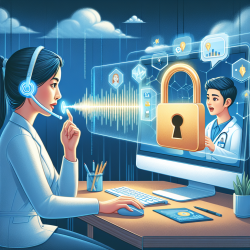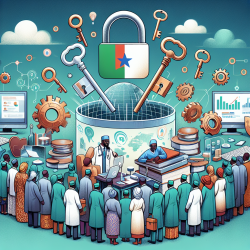The field of speech-language pathology is constantly evolving, and one of the most promising developments is the use of tele-rehabilitation to treat stuttering. A recent study titled "Determining the effect of tele-rehabilitation on patients with stutter using the goal attainment scaling (GAS)" provides compelling evidence on the effectiveness of remote speech therapy. This blog aims to help practitioners improve their skills by implementing the outcomes of this research or encouraging them to conduct further research.
The Study: An Overview
The study involved patients who visited rehabilitation centers affiliated with the Jahrom Welfare Office and underwent remote speech therapy using Skype. The Goal Attainment Scaling (GAS) was used to evaluate the treatment outcomes. The results were promising: the mean score of total GAS for patients was 53.08, and out of 112 health goals, patients reached the expected or higher-than-expected levels in 78 goals.
Key Findings
- The participants' speech and lingual skills improved significantly using videoconferencing.
- The total GAS scores of patients ranged from 29.53 to 81.05, with a mean of 53.08.
- More than half of the patients reached the expected or higher levels of their therapeutic goals.
Practical Implications for Practitioners
Given the positive outcomes, practitioners can consider incorporating tele-rehabilitation into their treatment plans. Here are some actionable steps:
- Set Clear Goals: Use the GAS to set specific, measurable goals for each patient. This not only provides a clear roadmap but also helps in evaluating the effectiveness of the treatment.
- Utilize Technology: Ensure that both the therapist and the patient have access to reliable technology. In this study, Skype was used, but other platforms can also be effective.
- Regular Follow-ups: Conduct regular follow-up sessions to monitor progress and make necessary adjustments to the treatment plan.
Encouraging Further Research
While the study provides strong evidence supporting tele-rehabilitation, further research is needed to explore its long-term effectiveness and applicability across different populations. Practitioners are encouraged to:
- Participate in or conduct studies to gather more data on the effectiveness of tele-rehabilitation.
- Explore the use of other technologies and platforms to enhance the delivery of remote speech therapy.
- Share their findings with the broader community to contribute to the growing body of knowledge in this field.
Conclusion
The study underscores the potential of tele-rehabilitation in improving the speech and lingual skills of patients with stuttering. By setting clear goals, utilizing reliable technology, and conducting regular follow-ups, practitioners can significantly enhance treatment outcomes. Moreover, continued research and data sharing will be crucial in optimizing tele-rehabilitation strategies.
To read the original research paper, please follow this link: Determining the effect of tele-rehabilitation on patients with stutter using the goal attainment scaling (GAS)










